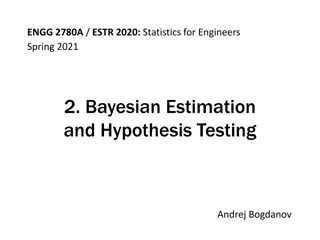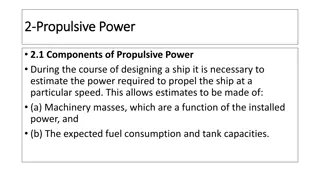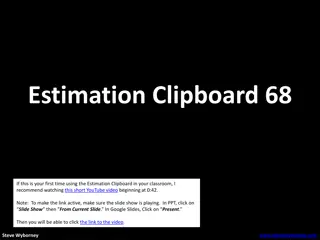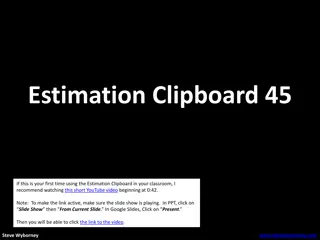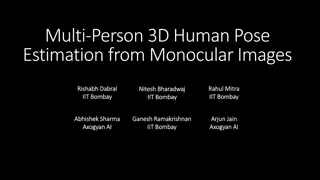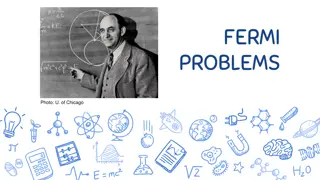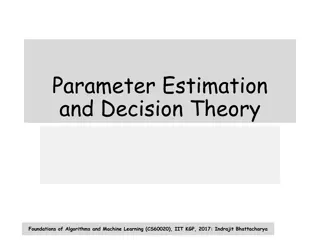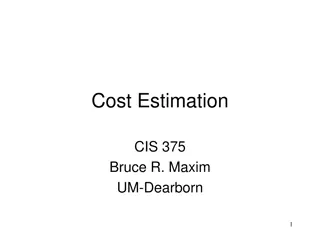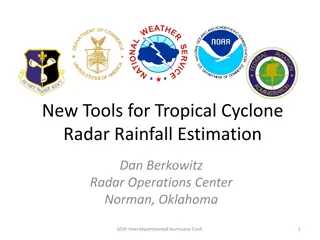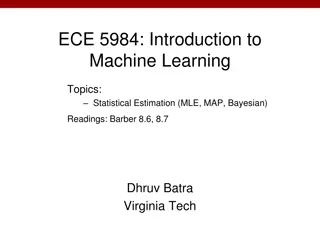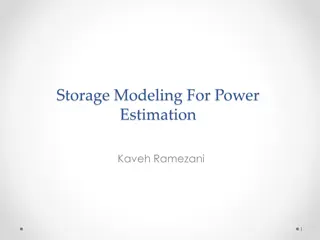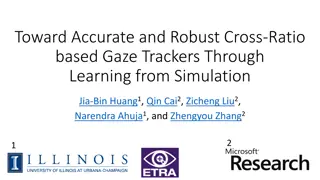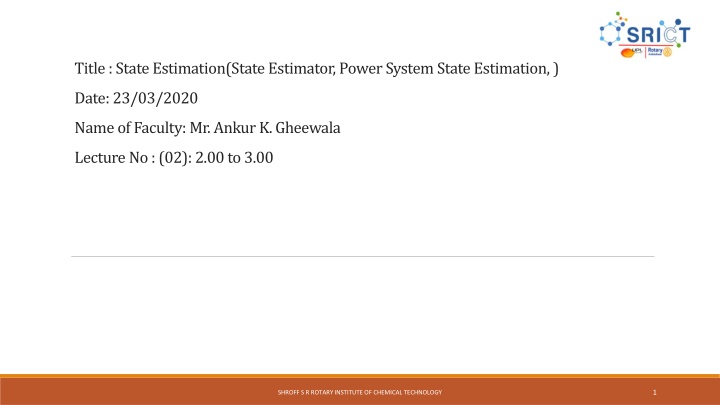
State Estimation in Power Systems: Techniques and Applications
State estimation plays a crucial role in detecting inaccurate data, approximating power flows and voltages, and estimating system states based on real-time measurements. It involves statistical techniques, error limits, and replacement of missing data using available measurements. The process aids in calculating line flows, power injections, and overall system conditions for effective monitoring and control of power systems.
Download Presentation

Please find below an Image/Link to download the presentation.
The content on the website is provided AS IS for your information and personal use only. It may not be sold, licensed, or shared on other websites without obtaining consent from the author. If you encounter any issues during the download, it is possible that the publisher has removed the file from their server.
You are allowed to download the files provided on this website for personal or commercial use, subject to the condition that they are used lawfully. All files are the property of their respective owners.
The content on the website is provided AS IS for your information and personal use only. It may not be sold, licensed, or shared on other websites without obtaining consent from the author.
E N D
Presentation Transcript
Title : State Estimation(State Estimator, Power System State Estimation, ) Date: 23/03/2020 Name of Faculty: Mr. AnkurK. Gheewala Lecture No :(02): 2.00 to 3.00 1 SHROFF S R ROTARY INSTITUTE OF CHEMICAL TECHNOLOGY
STATE ESTIMATOR STATE ESTIMATOR
Continue.. The state estimator detects bad or inaccurate data by using statistical techniques. For this, state estimators are designed such that they have well-defined error limits and are based on the number, types and accuracy of measurements. The state estimator approximates the power flows and voltages at a bus whose measurements are not available because of RTU failure or breakdown of telephone or a communication link. Under such a conditions, the state estimator is required to make available a set of measurements to replace missing or defective data. The state estimator uses Set of measurements available from RTU. System configuration supplied by the topological processor Network parameters such as line impedances as input Execution parameters(dynamic weight adjustments)
POWER SYSTEM STATE ESTIMATION POWER SYSTEM STATE ESTIMATION
Continue.. The State Estimation(SE) estimates the state of the system based on a set of real-time measurements. The state of the system defines the operating conditions of the system and is usually chosen as the bus voltage magnitudes and angles. Thus, for a system of N buses, the state of the system x contains N bus voltage magnitudes and N-1 bus voltage angle (one of the bus voltage angle is chosen as the reference.) That is x=[ 2, .., N V1, ..,VN] (1) Note that once the state of the system is determined then any quantity in the system, such as line flows and power injection at any bus can be calculated.
Continue.. Since it is not feasible to measure and telemeter the system state directly, in practice, other variables-mostly the ones that are important for the monitoring of the system, such as power generation from generation plants, load at important substation and power flows at important lines-are telemetered to the control Centre. Let, y denote the set of such measurements. As indicated before, the SE estimates the system state x based on these measurements by making use of the relationships between the measurements and the state variables. Consider, for example the measurements on small system is shown in fig.
Continue.. If we represent the line by its total series impedance per phase y12, then the system model for state estimation becomes the one shown in fig., and thus the measurements can be expressed in terms of state variables x = [ 2 V1 V2] as yi = hi(x) [where i = 1,2 m] .. ..(2) Where the function hi (x) is called the measurement function corresponding to the measurements yi . Note that the equality in equation-(2) would hold if the measurements and the model were perfect. However, the actual measurements and the model may contain errors. Assume that we can have an accurate system model, Equation-(2) can be modified to include the measurements error as Yi = hi (x) + ri, i=1,2 .,m ..(3)
Continue.. Where, ri = the error in measurements i. Hence, for the general case, we have a set of m equations relating m measurements to n states y = h(x) + r .......................................(4)
Assignment Questions: 1. Explain the functions of state estimator with the diagram. 2. Explain Power system state estimation . Hard copy submission date (31/3/2020) Mr. Ankur K. Gheewala (8511167103) 9 SHROFF S R ROTARY INSTITUTE OF CHEMICAL TECHNOLOGY


